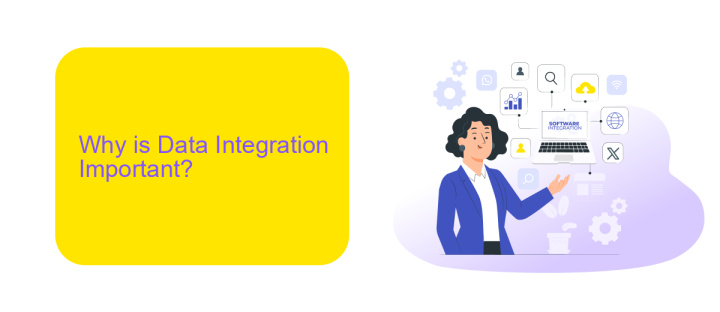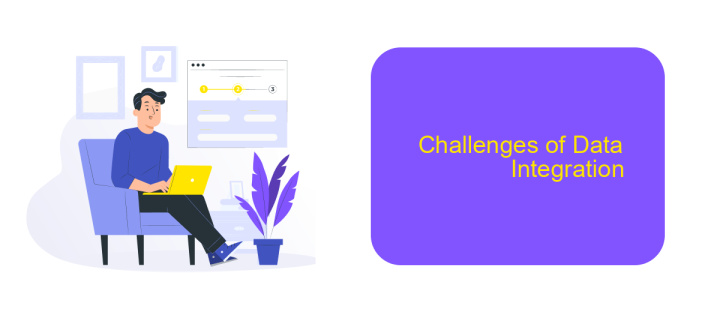What is Data Integration
Data integration is the process of combining data from different sources to provide a unified view. It is essential for businesses to make informed decisions, improve efficiency, and gain a competitive edge. By integrating data, organizations can ensure consistency, enhance data quality, and unlock valuable insights that drive strategic initiatives and operational excellence.
What is Data Integration?
Data integration is the process of combining data from different sources to provide a unified and comprehensive view. This practice is essential for businesses that need to consolidate information from various systems to make informed decisions and streamline operations. Effective data integration ensures that data is accurate, consistent, and accessible across the organization.
- Combines data from multiple sources
- Ensures data consistency and accuracy
- Facilitates comprehensive data analysis
- Improves decision-making processes
There are various tools and services available to facilitate data integration. One such service is ApiX-Drive, which allows users to automate data transfer between different platforms without needing extensive technical knowledge. By using ApiX-Drive, businesses can easily set up integrations, ensuring that their data is always up-to-date and synchronized across all systems. This helps in reducing manual work, minimizing errors, and enhancing overall efficiency.
Why is Data Integration Important?

Data integration is crucial for businesses as it enables the seamless combination of data from different sources, providing a unified view that enhances decision-making. By integrating data, organizations can ensure consistency, accuracy, and accessibility, which are vital for strategic planning and operational efficiency. This integration helps eliminate data silos, allowing for better collaboration across departments and more informed insights, ultimately driving growth and innovation.
Moreover, data integration simplifies the process of managing and analyzing large volumes of data, saving time and resources. Tools like ApiX-Drive facilitate this by automating the integration process, reducing manual effort and minimizing errors. With ApiX-Drive, businesses can easily connect various applications and data sources, ensuring that data flows smoothly and is always up-to-date. This leads to improved productivity, enabling organizations to focus on leveraging data for competitive advantage rather than dealing with the complexities of data management.
Benefits of Data Integration

Data integration offers numerous advantages for businesses looking to streamline their operations and enhance decision-making processes. By combining data from various sources into a single, unified view, organizations can achieve greater efficiency and accuracy in their data management practices.
- Improved Decision-Making: Access to comprehensive, real-time data allows for more informed and timely business decisions.
- Increased Efficiency: Automated data integration processes reduce the need for manual data entry, minimizing errors and saving valuable time.
- Enhanced Data Quality: Consistent data formats and validation rules ensure higher data quality and reliability.
- Cost Savings: Streamlined data management processes can lead to significant cost reductions in IT and operational expenses.
- Scalability: Solutions like ApiX-Drive enable businesses to easily scale their data integration efforts as they grow, without the need for extensive technical expertise.
Overall, data integration is a critical component for modern businesses aiming to stay competitive in a data-driven world. By leveraging tools such as ApiX-Drive, organizations can seamlessly integrate their data sources, thereby unlocking new insights and driving better business outcomes.
Challenges of Data Integration

Data integration presents numerous challenges that organizations must navigate to achieve seamless data flow. One of the primary issues is data inconsistency, where data from various sources may have different formats, structures, or standards, making it difficult to merge and analyze effectively. Additionally, data quality is a significant concern, as poor-quality data can lead to inaccurate insights and decision-making.
Another challenge is scalability. As organizations grow, the volume of data increases, necessitating robust systems that can handle large-scale data integration without compromising performance. Security and privacy are also critical, as integrating data from multiple sources can expose sensitive information to potential breaches.
- Data inconsistency
- Poor data quality
- Scalability issues
- Security and privacy risks
To address these challenges, leveraging automated data integration tools like ApiX-Drive can be highly beneficial. ApiX-Drive simplifies the integration process by providing a user-friendly platform that connects various data sources seamlessly. This not only enhances data consistency and quality but also ensures that integration efforts are scalable and secure.
Best Practices for Data Integration
To ensure successful data integration, it is essential to start with a clear understanding of your data sources and objectives. Identify all the systems and databases involved and define the specific goals you aim to achieve through integration. This foundational step will help you design an efficient integration strategy that aligns with your business needs. Additionally, consider using tools like ApiX-Drive, which can simplify the integration process by providing a user-friendly interface and pre-built connectors for various applications.
Another best practice is to prioritize data quality and consistency. Implement data validation rules and cleansing procedures to ensure that the integrated data is accurate and reliable. Regularly monitor and update your integration processes to adapt to any changes in your data sources or business requirements. Leveraging services like ApiX-Drive can also assist in maintaining data integrity by automating routine tasks and providing real-time synchronization between systems. By following these practices, you can achieve a seamless and efficient data integration process that supports your organizational goals.
FAQ
What is Data Integration?
Why is Data Integration important?
What are the common challenges in Data Integration?
How can automation tools help in Data Integration?
What are the best practices for successful Data Integration?
Routine tasks take a lot of time from employees? Do they burn out, do not have enough working day for the main duties and important things? Do you understand that the only way out of this situation in modern realities is automation? Try Apix-Drive for free and make sure that the online connector in 5 minutes of setting up integration will remove a significant part of the routine from your life and free up time for you and your employees.

